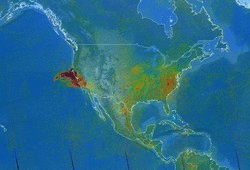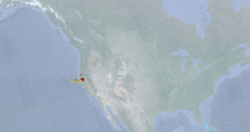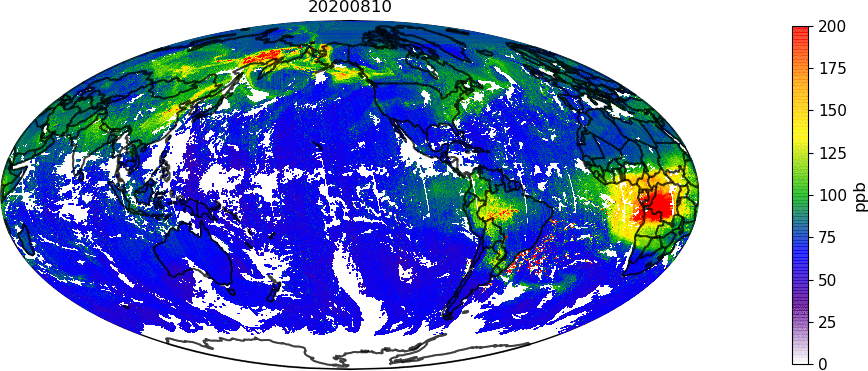|
~
|
During the summer season, forest fires are a natural part of the climate and landscape of the western USA. Recent years have seen a prolonged fire season with increased intensity and extent of the fire events in comparison to a 'normal' season. The long fire seasons are caused by droughts and higher-than-average spring and summer temperatures. At least part of these phenomena are thought to be caused by global climate change. The 2020 fire season so far has shown intense and widespread fire events ans may be registered as one of the worst seasons ever recorded. Although usually limited to California, this year the fires have spread further North to the states of Oregon and Washington. BIRA-IASB has been following the chemical gas species released from the wildfires by means of the TROPOMI satellite sensor. Although observations from ground and a range of infrared-observing satellites allow for the detection of fire sources (see, for example: FIRMS), this does not give any information on the chemical species released into the atmosphere during the burning of organic material. Those gases, such as formaldehyde (HCHO), glyoxal (CHOCHO), Methane (CH4), and carbon monoxide (CO) are each known to play an important role in atmospheric chemistry. HCHO and CHOCHO play a role in the formation of ozone and organic aerosol and therewidth contribute to air pollution and health risks. The follow-up of the emission of these (and other) species from satellite is therefore important for the assessment of their direct impact on the environment and their role in atmospheric chemistry and climate. The BIRA-IASB research teams "UV-VIS/DOAS" and "Infrared observations and Lab experiments" have monitored the amounts of formaldehyde, glyoxal and carbon monoxide released during the 2020 fire season so far by means of the TROPOMI instrument flying on the Copernicus Sentinel 5-P (S5P) satellite. Observing each location on Earth on a daily basis, TROPOMI allows for the monitoring of amounts and transport of a host of trace gas species in the atmosphere. The TROPOMI observations very well show the emission of substantial amounts of formaldehyde, glyoxal and carbon monoxide into the atmosphere. The images below show animated daily quantities of the three gases. Due to its relatively short lifetime of about 3 hours, in particular the CHOCHO signal shows the large number of individual fire sources where this gas is emitted. Formaldehyde molecules typically survive a bit longer (several hours), but long-range HCHO transport as detected here is rarely seen (but was also observed during the extaordinary 2019/2020 wildfire season in Australia). Around 11 September, the formaldehyde plumes from California can be traced all the way across the Atlantic towards the United Kingdom. The transport of carbon monoxide is easier to follow, as the CO molecules typically reside in the atmosphere for many months. With the wildfires still ravaging, scientists at BIRA-IASB will keep an eye on the development in the weeks to come and will continue to collect data on the emitted gases in order to better understand their creation, transport, and environmental effects. 


Click any image to enlarge. All images: © BIRA-IASB/DLR/ESA; Contains modified Copernicus data.
Links
Share this article |



